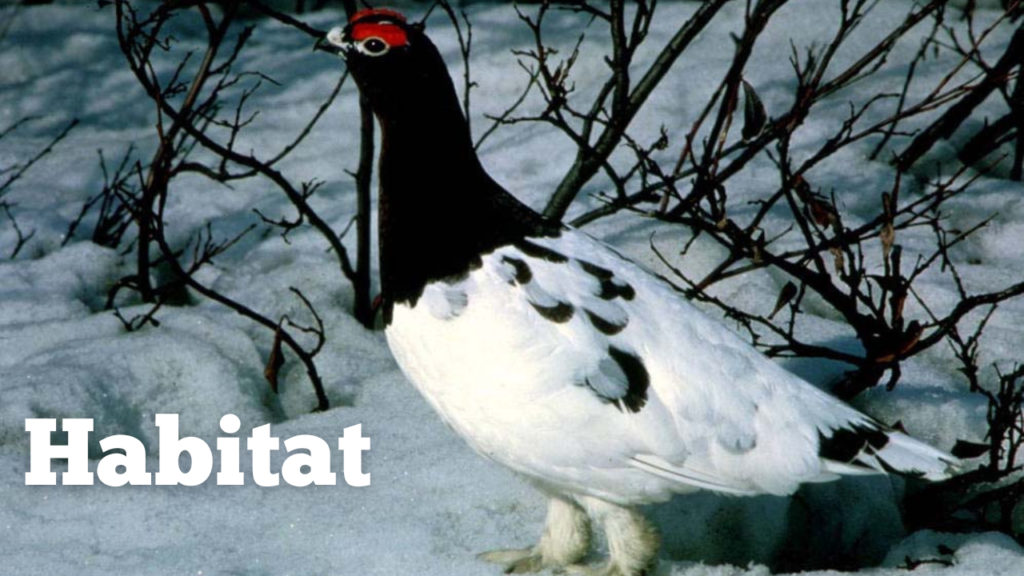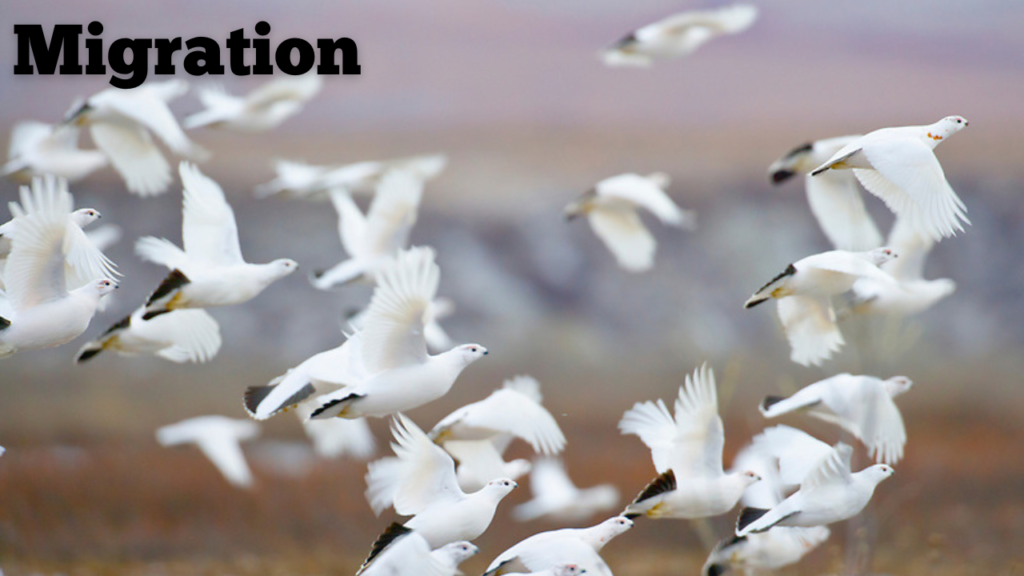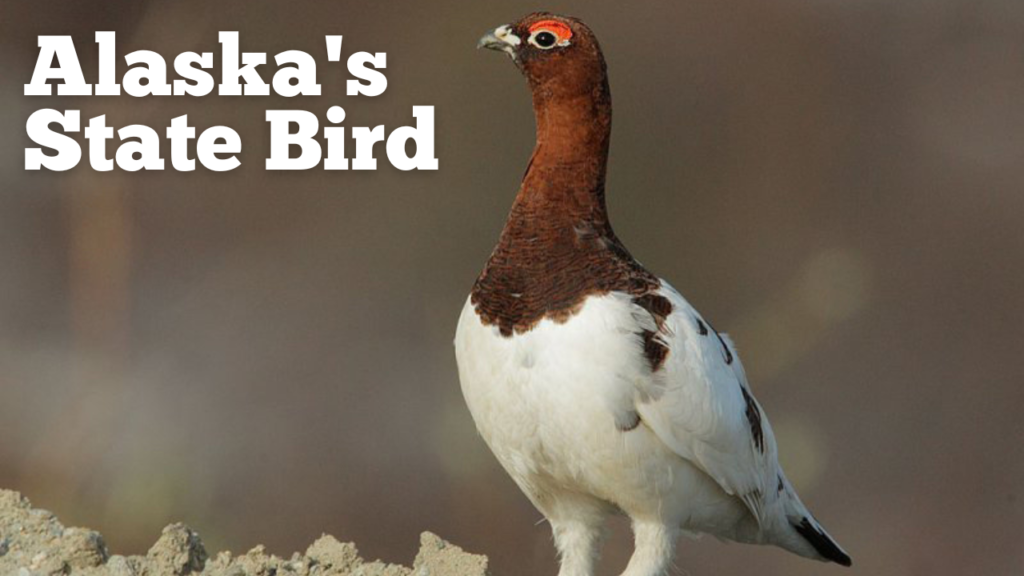Introduction:
The Arctic and subarctic regions of North America and Eurasia are home to the amazing medium-sized grouse known as the Willow Ptarmigan (Lagopus lagopus). As one of the most common and widespread bird species in this vast northern state, it has been bestowed with the esteemed title of official state bird of Alaska.
The Willow Ptarmigan’s incredible ability to blend in with its surroundings is what makes it stand out from other birds. Its distinctive plumage, which experiences an amazing seasonal transformation, is largely responsible for this achievement. It decorates itself with brown and white hues in the summer to blend in with the surroundings, then turns completely white in the bitter cold of Alaska’s winters. This master of disguise’s natural camouflage helps to thwart predators’ attempts to identify him.
The exceptional hardiness and adaptability of Willow Ptarmigans is lauded in addition to their amazing capacity for camouflage in plain sight. These amazing birds are able to withstand some of the harshest environments on Earth, such as the subarctic boreal forests and the harsh Arctic tundra. Moreover, their intrinsic ability to find food in even the most unfavorable circumstances is remarkable.
Physical Characteristics:
Willow Ptarmigans are medium-sized grouse, about the size of a chicken. They are part of the grouse family. These birds have a round head with a small bill, short legs, and a plump body. They have stunning plumage; during the warmer months, their feathers are a mixture of brown and white, but as winter draws near, they become a pure white color. The scientific term for this seasonal change in plumage is called molting. The feathered feet of Willow Ptarmigans are one of their unusual characteristics; they act as a natural insulator against the cold ground.
Habitat and Range:
Willow Ptarmigans are resilient creatures that live in a variety of habitats. Arctic tundra, subarctic boreal forests, and peaceful alpine meadows are among their preferred habitats. They are more likely to flourish in places where willow and birch thickets are present because they provide them with food and cover. Willow Ptarmigans are therefore not confined to Alaska; rather, they are found throughout North America, extending into Canada and the northern United States, except in the Southeast Panhandle and the Aleutian Islands.

Diet and Feeding Behavior:
Willow Ptarmigans consume a wide range of plant-based foods, including willow leaves, juicy berries, and different seeds, as part of their herbivorous diet. Their culinary preferences change in the summer to include insects and other small prey.
Willow Ptarmigans use their beaks to forage for food, adopting a ground-feeding strategy. They have a reputation for using their cunning to dig through snow blankets to find food.
Migration and Movement Patterns:
The varied migration patterns displayed by willow ptarmigans show how adaptable they are to the changing of the seasons. Some populations migrate great distances to avoid the harsh winters in the Arctic, while others migrate shorter distances or stay in their chosen area all year round. In order to participate in the breeding season, these migratory species migrate northward in the winter and then retreat to milder climates.
The fact that Willow Ptarmigans do not migrate is evidence of their resilience to the hardships of living in the bitter cold all year round.

Behavior and Social Structure:
Willow Ptarmigans live in groups and can form flocks of up to several dozen birds. Although there may be unrelated birds in these flocks, they typically consist of closely related birds. Remarkably, Willow Ptarmigans are not just cohabitants; they are fiercely territorial and will fight to keep other avian species or other Willow Ptarmigans out of their territory.
Reproduction and Life Cycle:
Springtime marks the start of Willow Ptarmigan breeding season. In order to entice possible mates, the male performs a display that includes drumming his wings and puffing up his throat pouches. After a female has been convinced, she builds her nest on the ground, typically under a tree or shrub that provides protection. She deposits a clutch of six to twelve eggs in this nest, which she diligently incubates for about twenty-three days.
In a remarkable act of devotion, the male assists in caring for the young chicks. The chicks begin their independent journeys when they fledge from the nest after 21 days. A Willow Ptarmigan’s lifespan typically lasts three to five years.
Conservation Status and Threats:
At the moment, there is no classification for the Willow Ptarmigan as a threatened or endangered species. However, it is not immune to a number of looming problems, such as habitat degradation, hunting, and climate change.
The threat posed by climate change is immediate because Willow Ptarmigans depend on the Arctic and subarctic for their habitat, and as these areas warm, there are fewer places where they can live. Concurrently, there is a problem with habitat loss as Willow Ptarmigan domains are gradually cleared for development and other human uses.
Although there are concerns regarding hunting, most regions have strict regulations in place to limit the negative effects of this activity on the species and ensure its survival.
Conservation Efforts:
There are committed efforts being made to protect Willow Ptarmigans and their natural environments. These programs include a range of tactics:
- Habitat Protection: Initiatives to protect the habitats of Willow Ptarmigan are actively supported in an effort to safeguard these areas for upcoming generations. Climate Change Mitigation: To mitigate the negative effects of climate change on these amazing birds and their environments, efforts are being made to reduce greenhouse gas emissions.
- Public Education: Public awareness of the value of willow ptarmigans in the ecological web and the need for conservation is increased as a result of this communication.
Conclusion:
Within Alaska’s avian legacy, the Willow Ptarmigan is a unique and highly respected symbol of adaptability and resilience. This fascinating bird is essential to the Arctic and subarctic ecosystems and represents the wildness of Alaska. It is our responsibility as environmental stewards to safeguard the Willow Ptarmigan and its habitat so that future generations can continue to be astounded by this wonder of nature.
